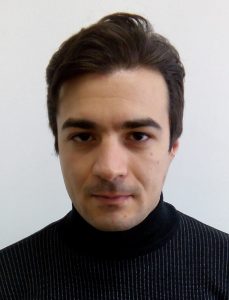
Junior Researcher
In 2010 graduated from the Kabardino-Balkarian State University named after H.M. Berbekov, Faculty of Microelectronics and Computer Technologies. Since 2011 an employee of the Institute.
List of major works:
- Kazakov M.A. On the question of logical operations implementation into quantum ΣΠ-neurons // Proceedings of the II International Conference of Young Scientists “Mathematical Modeling of Fractal Processes, Related Problems of Analysis and Informatics”. Nalchik, 2012, pp. 111-112.
- Kazakov M.A. Translation operator for basic qubit states // Materials of the XI School of Young Scientists “Nonlocal boundary value problems and problems of modern analysis and informatics”. Nalchik, pp. 33-34.
- Kazakov M.A. On the question of quantum logical operations for implementing ΣΠ-neuron models // Proceedings of the XII School of Young Scientists “Nonlocal boundary value problems and problems of modern analysis and informatics”. 2014, pp. 32-34.
- Kazakov M.A. Automated method for calculating genetic similarity and genetic distances using Ney’s criterion // Cybernetics and programming. 2015, no. 6, pp. 8-12.
- Shibzukhov Z.M., Kazakov M.A. Stochastic average gradient algorithm based on aggregating functions // Bulletin of KRAUNC. Phys. Mat. Science. 2016, no. 4-1 (16), pp. 110-123.
- Shibzukhov Z.M., Dimitrichenko D.P., Kazakov M.A. Empirical Risk Minimization principle based on aggregate losses for solving regression problems // Software products and systems. 2017, vol. 30, no. 2, pp. 180-186.
- Kazakov M.A. Functional logical models of SP-neuron // Results of Science and Technology. Ser. Let’s lie. mat. and her adj. Topic. review. 2018, vol. 154, VINITI RAN, Moscow, pp. 49-53.
- Kazakov M.A.To the question of teaching-learning based optimization for neural networks // Bulletin of KRAUNC. Phys.-mat. science. 2018, no. 3 (23), pp. 184-189.
- Certificate of state registration of computer programs No. 2018614058. (2018)


